2024 Social Media Benchmark Report
In the dynamic world of social media, understanding the landscape is pivotal for crafting strategies that resonate and convert. Braveheart Digital is excited to share insights from the 2024 Social Media Benchmark Report by RivaIIQ, covering critical metrics across 14 industries on platforms including Facebook, Twitter, TikTok, and Instagram. This report is your compass in the ever-evolving realm of digital engagement, highlighting trends such as engagement rates, optimal posting frequencies, and the efficacious use of post types and hashtags.
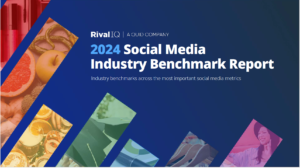
Key Takeaways
The “2024 Social Media Industry Benchmark Report” unveils pivotal insights into the evolving dynamics of social platforms. Despite a notable decline, TikTok stands resilient as the front-runner in user engagement, a testament to its enduring appeal. The report highlights the diversity in posting frequencies across different platforms, indicating that a one-size-fits-all approach to content cadence is obsolete. In the realm of engagement amplifiers, holiday-themed hashtags have emerged as significant catalysts, while Instagram Reels are rapidly ascending in popularity, showcasing robust engagement metrics.
Moreover, sectors like Higher Education and Sports Teams are setting benchmarks in engagement, attributed to their superior content quality and meticulously timed postings. These revelations serve as a crucial guide for brands and marketers aiming to recalibrate their social media strategies, with a pronounced emphasis on refining content quality and adapting to platform-specific trends.
Change In Social Media Engagement Rates Over Time
The “Social Media Benchmark Report” unveils significant shifts in engagement rates across platforms, showcasing the fluid landscape of social media interaction. TikTok, despite experiencing a steep decline in engagement rates by over 50%, continues to outperform other platforms, suggesting its foundational strength in captivating audiences. In contrast, Instagram displays a level of steadiness, with a minor 8% dip in engagement, indicating a potential plateau in how users engage with content on the platform. Facebook presents a unique case, witnessing a slight uptick in engagement rates, hinting at evolving user behaviors or beneficial algorithmic adjustments. Twitter, however, encounters a 20% fall in engagement, mirroring the broader challenges and shifts within the platform’s user interaction dynamics. These fluctuations underscore the ever-changing nature of social media engagement, highlighting the critical need for marketers to remain agile and informed in their strategies.
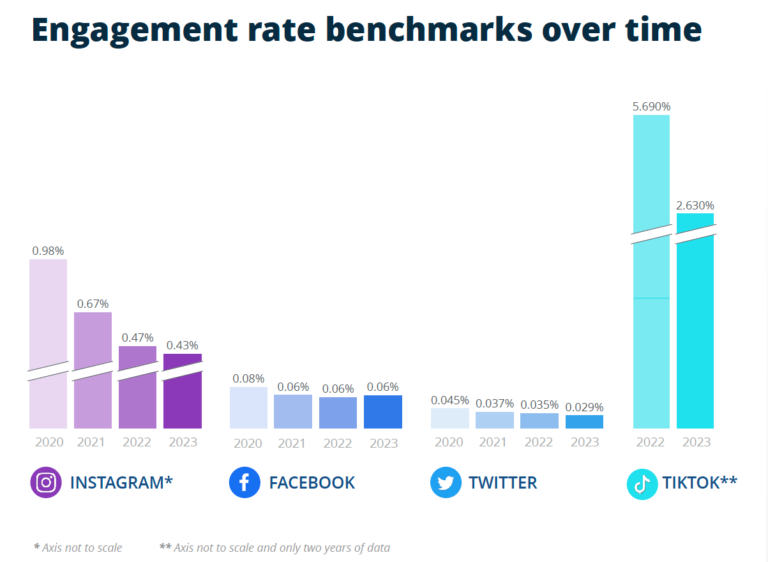
Posting Frequency
The Social Media Benchmark Report sheds light on evolving trends in post frequency across key social media platforms, illustrating a nuanced landscape of digital interaction. On platforms like Instagram and TikTok, there’s been a noticeable uptick in post frequency, suggesting that brands and creators are intensifying their content efforts to bolster or sustain audience engagement. Conversely, Facebook and Twitter have seen a downturn in posting frequency, with Twitter experiencing a pronounced 15% reduction. This trend might reflect a strategic pivot among brands and users towards emphasizing content quality over sheer volume, or perhaps a realignment of focus towards other platforms offering greater engagement opportunities. The overarching trend reveals diverse approaches in post frequency, signaling a period of adaptation and recalibration by brands to align more closely with shifting content efficacy, algorithmic changes, and evolving audience expectations. These insights underscore the necessity for a more tailored and discerning approach to social media strategy, urging brands to customize their content cadence and substance to match the distinct dynamics of each platform and its user base.
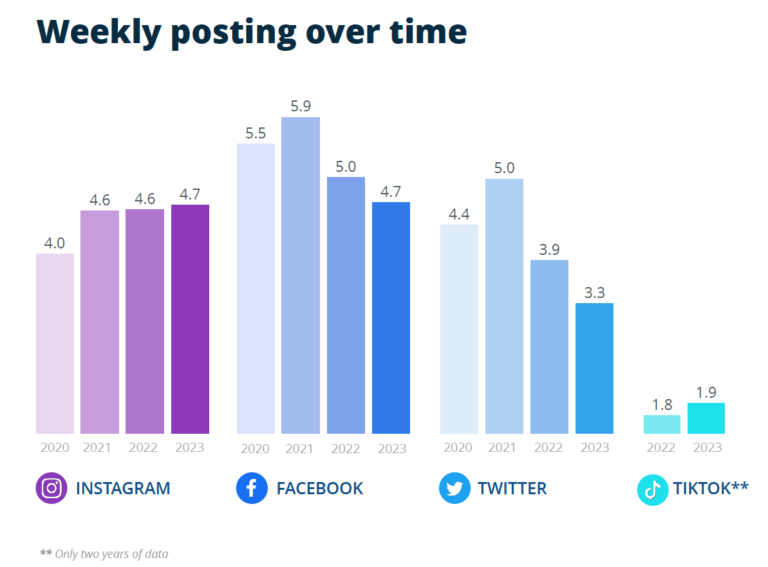
Social Media Benchmark Report: Facebook
The comprehensive insights into Facebook’s engagement dynamics, as delineated in the report, furnish a granular understanding of how brands navigate content strategy on the platform. It reveals an average posting frequency of 4.70 posts per week, shedding light on the prevailing content rhythms adopted by diverse industries. Notably, the engagement rate per post hovers at 0.044%, illustrating the typical level of user interaction brands might anticipate.
The analysis delves deeper into the differential performance of post types, highlighting that visually appealing content, such as photos, markedly surpasses other formats in garnering user engagement. This underlines the persuasive power of visual storytelling in captivating Facebook audiences.
Furthermore, the report dispenses actionable insights for brands aiming to elevate their Facebook presence, suggesting strategies such as timing optimization, effective hashtag utilization, and the integration of trending topics to enhance content visibility and user engagement.
Additionally, it provides a cross-industry comparative framework, enabling brands to benchmark their Facebook metrics against sector-specific standards. This comparative angle not only aids brands in gauging their competitive stance but also in identifying areas ripe for improvement.
In essence, the report accentuates the criticality of a meticulously crafted approach towards post frequency and content selection on Facebook, with a particular emphasis on leveraging visual elements to boost engagement. Moreover, it arms brands with the knowledge to refine their social media strategies, ensuring they align with industry benchmarks and audience expectations, thereby optimizing their engagement and performance on the platform.
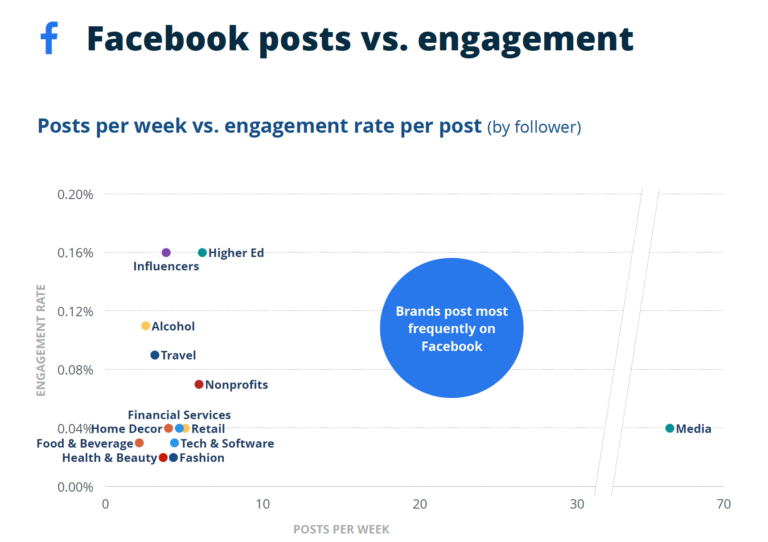
Social Media Benchmark Report:: Instagram
The “2024 Social Media Benchmark Report” offers enlightening insights into Instagram’s usage, particularly concerning engagement and posting frequency. According to the report, the current average for brand posts on Instagram stands at approximately 3.98 posts per week, providing a clear gauge of how actively brands are engaging with their audience on this visually driven platform.
Moreover, the engagement rate per post has been recorded at 0.276%, a pivotal metric that underscores the level of interaction between brands and their followers. This rate is instrumental in assessing the effectiveness of content and the degree of audience engagement on Instagram.
These gathered statistics serve as crucial benchmarks for brands aiming to navigate the Instagram landscape effectively. They provide a standard against which companies can measure their own performance, offering insights that could steer the optimization of their social media strategies. By aligning their engagement tactics and posting frequency with these industry insights, brands can enhance their interaction with audiences, ensuring a more dynamic and fruitful presence on Instagram.
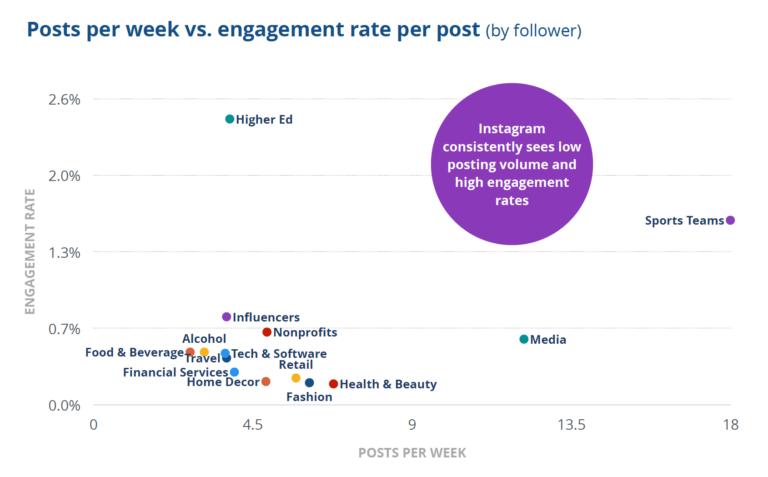
Social Media Benchmark Report:: Twitter / X
The “2024 Social Media Benchmark Report” casts light on the nuanced dynamics of Twitter engagement and activity, presenting a distinct picture compared to other social platforms. According to the report, the average posting frequency for brands on Twitter is around 6.97 tweets per week, signifying a vibrant level of interaction and content dissemination expected on this fast-paced platform.
Furthermore, the engagement rate per tweet is documented at 0.044%. While this figure may seem modest in comparison to platforms like Instagram, it is a vital indicator of the quality of interaction and the effectiveness of content in engaging the Twitter audience.
This analytical snapshot underlines Twitter’s unique position in the social media ecosystem, where the balance between post frequency and engagement plays a crucial role. These insights underscore the necessity for brands to develop customized content strategies tailored specifically for Twitter to enhance engagement and broaden their reach, highlighting the platform’s distinct requirements for successful brand communication and audience engagement.
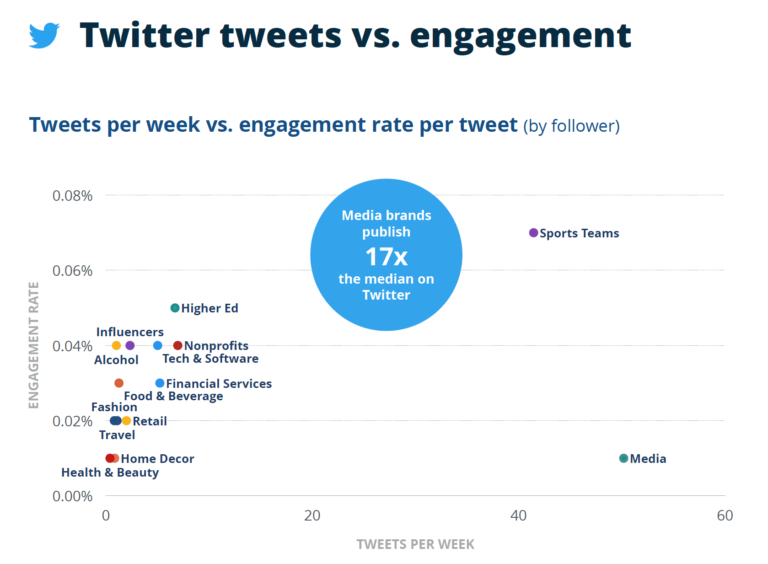
Social Media Benchmark Report:: TikTok
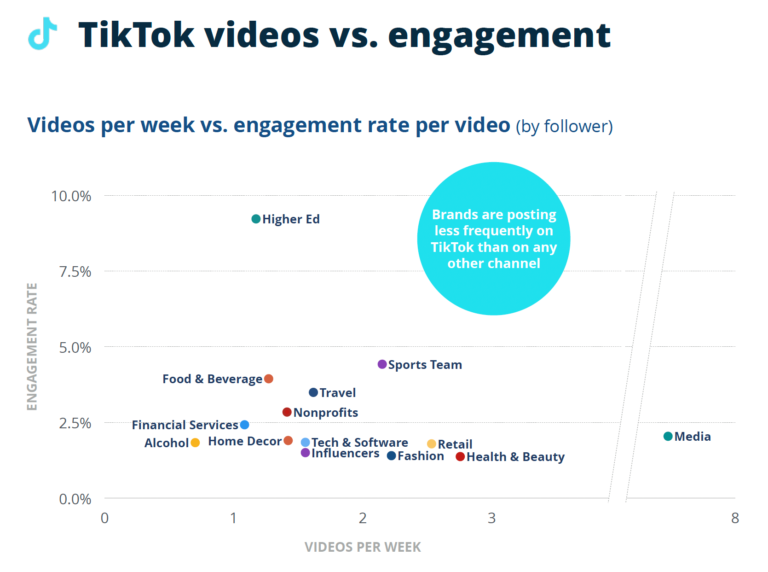
9 Ways To Use This Social Media Benchmarking Data
- Adjust Posting Frequency: By understanding the average posting frequencies on platforms like Instagram, Facebook, Twitter, and TikTok, businesses can adjust their content schedules to align with industry norms or identify opportunities to stand out by posting more or less frequently.
- Optimize Engagement Strategies: The report's insights into engagement rates can help businesses identify which platforms are currently offering the best opportunities for interaction with their target audience. For example, high engagement rates on TikTok may encourage more investment in video content, while the engagement specifics on Facebook might influence the type of content shared.
- Tailor Content Types: With detailed analysis on the performance of different post types (e.g., photo, video, link) across platforms, businesses can tailor their content strategies to focus on the most engaging formats for each platform.
- Innovative Use of Hashtags and Themes: The report highlights the importance of holiday-themed hashtags and other popular tags in boosting engagement. Businesses can incorporate relevant hashtags into their posts to increase visibility and engagement.
- Benchmark Against Industry Standards: By comparing their own performance metrics (engagement rates, post frequency) with those provided in the report, businesses can gauge their social media success against industry standards and identify areas for improvement.
- Refine Audience Engagement Tactics: Understanding the nuances of how different industries engage with their audiences on various platforms can inspire businesses to adopt new tactics or refine their approach to audience interaction.
- Leverage Platform-Specific Features: Insights into the popularity and effectiveness of Instagram Reels or TikTok videos can encourage businesses to experiment with these formats, potentially unlocking new avenues for engagement and content strategy.
- Strategic Planning and Investment: The report's findings can inform strategic decisions regarding where to allocate resources and effort, prioritizing platforms and content types that are most likely to drive engagement and business outcomes.
- Content Calendar Planning: Insights into the best times to post and the types of content that perform well can help in planning a more effective content calendar that aligns with audience preferences and platform trends.
If you need help amplifying your website content via social media, contact Braveheart Digital Marketing. We’re a social media agency in Manchester NHthat can help you reach your target audience and achieve your marketing goals. Contact us today to learn more.
Recent Posts

Generative Engine Optimization (GEO)
Generative Engine Optimization (GEO): The Future of Search and How It Differs from SEO As digital marketing continues to evolve, search is undergoing a radical

Best Practices for Building a Brand Presence on YouTube
Updated Best Practices for Building a Brand Presence on YouTube (2025) YouTube continues to be a dominant platform for video content, offering businesses unparalleled opportunities
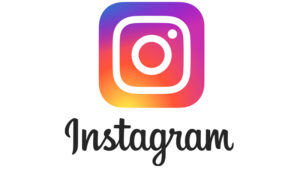
Best Practices for Building a Brand Presence on Instagram
Best Practices for Building a Brand Presence on Instagram (2025) Instagram continues to dominate as a platform for visual storytelling, brand development, and audience engagement.
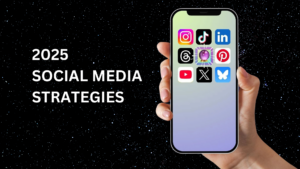
Social Media Strategies
10 Proven Social Media Strategies to Dominate in 2025 In the dynamic landscape of 2025, mastering social media requires a strategic approach tailored to evolving

Definitive Guide To Building Your Brand Presence on Twitter
Updated Best Practices for Building a Brand Presence on X (2025) X (formerly Twitter) continues to be a powerful platform for real-time conversations, customer engagement,

Definitive Guide To Building Your Brand Presence on LinkedIn
Updated Best Practices for Building a Brand Presence on LinkedIn (2025) LinkedIn remains the premier platform for professional networking and B2B marketing, offering businesses unparalleled